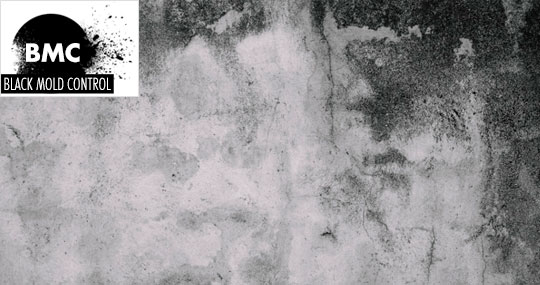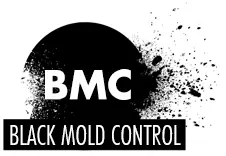 Is black mold dangerous is one of the most frequently asked question. The simple answer, yes mold can be dangerous, but not all mold is as dangerous as others. One of the most dangerous molds is black mold, it is also one of the most feared. Another common mold in buildings and homes is white in color, white mold generally is not as dangerous. But the rule of thumb is to consider all mold dangerous and use care with the removal and limit any chances of mold exposure and the harmful side effects related. If you do believe your home contains some serious mold issues you and your family (including your pets) should vacate the home immediately.
Is black mold dangerous is one of the most frequently asked question. The simple answer, yes mold can be dangerous, but not all mold is as dangerous as others. One of the most dangerous molds is black mold, it is also one of the most feared. Another common mold in buildings and homes is white in color, white mold generally is not as dangerous. But the rule of thumb is to consider all mold dangerous and use care with the removal and limit any chances of mold exposure and the harmful side effects related. If you do believe your home contains some serious mold issues you and your family (including your pets) should vacate the home immediately.
Dangerous health issues caused by mold exposure
There are many different health issues caused by mold and its exposure, one of the most common is respiratory illness in otherwise healthy individuals. Chronic coughing, itchy watering eyes, persistent sore throat are many of the common symptoms. Black mold causes allergic reactions in most people and different individuals react differently when exposed. If you experience any of these symptoms you should seek the care of a doctor who will start you on a mold exposure treatment program.
Cleaning small areas of mold
Small areas of mold can be cleaned with a bleach solution, in some cases bleach is not strong enough in that case I would use a paste made with water and a laundry solution that contains borates/borax. After the area is treated it is important to check the area in a few weeks to see if there are any signs that mold growth is coming back.
Cleaning larger areas of mold
Large mold infestations are serious and should not be tackled by a homeowner, call a mold removal company in the area and have them come out and investigate the situation and give an estimate of the mold removal costs.
After you accept their bid they will take a mold sample from a mold testing kit and send this to a environmental lab for analysis. A report will come back and the mold removal company should interpret the results for you explaining the exact mold and the best process for removal.
Is black mold toxic?
Perhaps it is a little misleading to say, ‘Yes’ when anyone asks, ‘Is black mold toxic’? The symptoms, allergies and illnesses that can arise as a result of black mold are real and create a serious health hazard. However, it is the Volatile Organic Compounds (VOCs) that are formed by molds that make them dangerous enough to create respiratory and immune problems.
According to the Centers for Disease Control (CDC), mold itself is not toxic and the word ‘toxic mold’ is a misnomer. Molds found in most homes are toxigenic, which means the molds produce the toxins that do the damage to human systems and homes.
Most common mold spores
The most common mold spores are Stachybotrys, Cladosporium, Penicillium, Aspergillus and Alternaria. These molds will grow anywhere inside of a building where there is moisture. Once you begin to see the yellowish, brownish, greenish or grayish-black stains that form on walls and ceilings, you are at risk for mold allergies or may develop mold symptoms that are caused by the toxins that molds can generate.
You should take the necessary precautions to see how extensive the moisture damage is to your house by requesting a mold inspection from a reputable professional.

How does mold get into your house?
Mold can get into your house from open doorways, windows and heating, ventilation and air conditioning systems that take air in from outside. Spores that begin mold growth can also attach themselves to people from outside their clothing, animals, shoes and carrying cases or handbags. Some materials inside your home are designed to encourage mold growth too. Wet cellulose material, including paper and paper products, cardboard, wood and wood products and ceiling tiles are primary culprits. Other materials like dust, carpet, paints, wallpaper, fabric and upholstery, insulation and drywall are common mold conductors.
When is mold abatement necessary?
Mold abatement is necessary even if you find the slightest presence of mold in your home. The toxins connected to mold can cause any of the following conditions: headaches, cough, red eyes, breathing difficulty, nausea, rashes or hives on the skin, memory loss or loss of concentration, irregular blood pressure, damaged digestive system, and in some extreme cases, infertility.
Mold cleanup must begin with identifying the source of the moisture problem that assists the mold growing. After you have identified the problem and fixed it – especially if there is a leak or a problem with water gathering somewhere in your house – you should make sure you have properly cleaned the exposed surfaces to prevent the problem from recurring.
Final conclusion
The question about the toxicity of black mold should be answered with care when posed by someone who does not understand what mold is or how it spreads. Organizations like the CDC work to prevent the outbreak of disease as much as they work to prevent the spread of misinformation. While an organization committed to public health does not want to create widespread panic and chaos when the public has the wrong idea about something, it also has a vested interest in making sure that even the smallest likelihood of toxins created by mold is addressed.
Therefore, the answer to this question becomes one that is a paradox, of sorts. Is black mold toxic? You bet. Is there such a thing as ‘toxic mold’? No way. It does not exist because the CDC says it does not exist, right?
